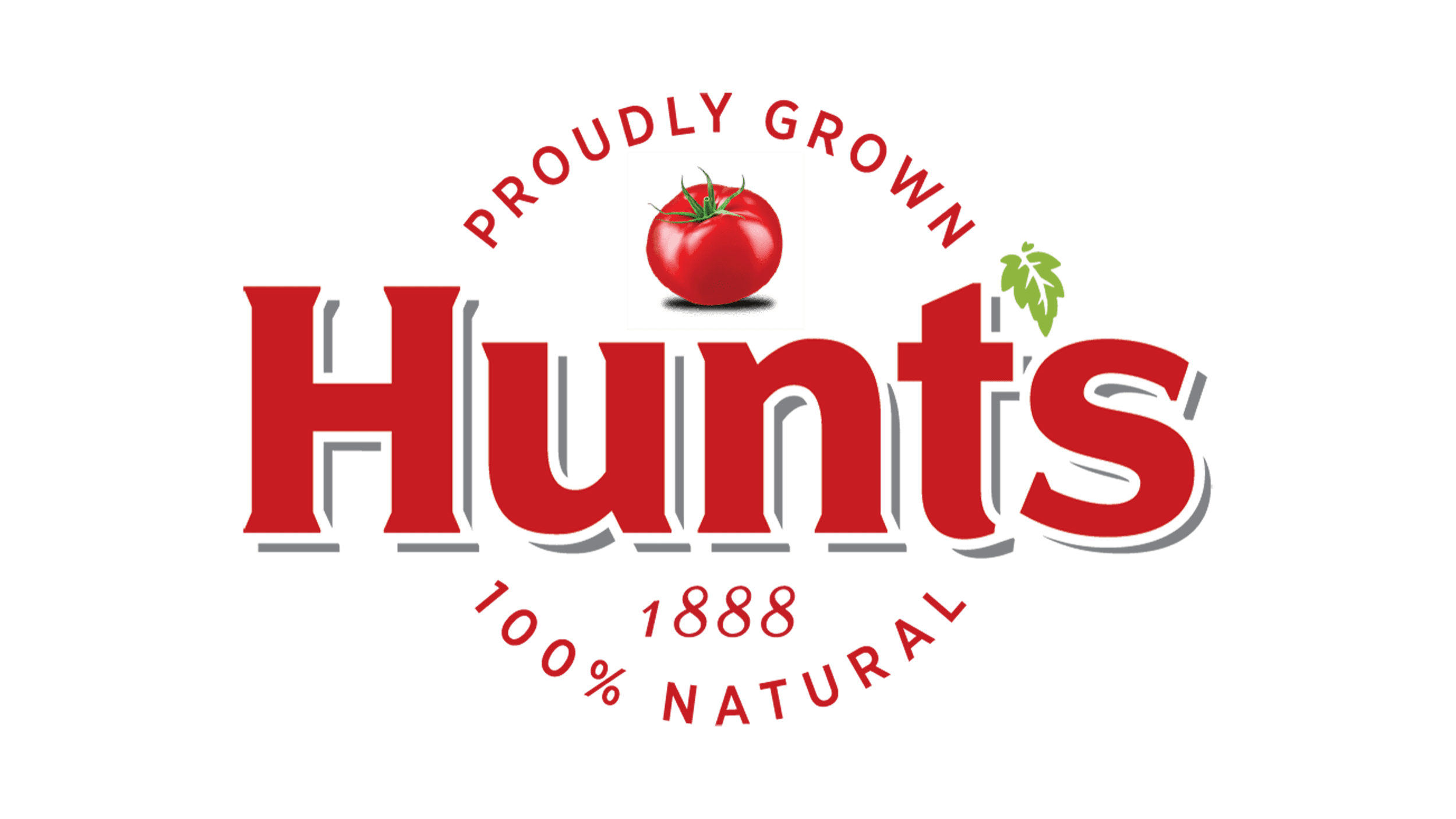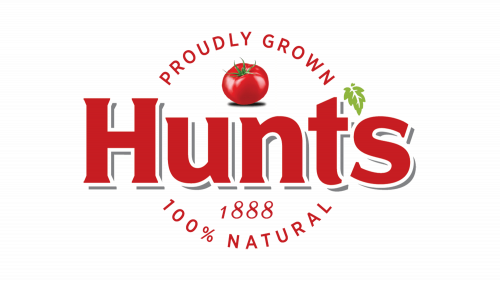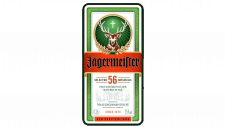Hunt’s Logo
Hunt’s is a brand of tomato products from America. Although not heard from outside of the homeland, it’s particularly important to many Americans. Their ketchup is a staple of the diet for many consumers there, although they also sell canned, fresh tomatoes and sauces made from them.
Meaning and History
Hunt’s was created in 1888 by the Hunt brothers. It didn’t stay a family business for too long – soon enough they were incorporated into one of the growing food corporations, and then sold to several more over the course of several decades. That’s why the company is called ‘Hunt’s’ now, as if there was just one Hunt involved.
1888 – 2008
The iconic logo was just the company name written in white letters over a (preferably) red background. It mostly came naturally, because the majority of their products had a red packaging, so you would only really see these letters against red. The font was mostly a plain style, except for the two middle letters, which were skewed for symmetry.
2008 – 2019
2019 – today
The 2019 logo also used the iconic ‘Hunt’s’ inscription in the middle. Here, however, it’s colored in red and outlined in white. Furthermore, they surrounded it with various elements, such as a single tomato on the top and several words arranged into a circular shape behind the main piece, including: ‘Proudly Grown’ & ‘100% Natural’.
Visually, it’s very much like the previous logotype, except much simpler and without the plaque they were using as foundation for the logo.
The new logo is much more eloquent. It had the same white text over the red background (except with some notches ledges), except the background itself now had a form of a rectangle with two a bloated circle in the middle. Over the writing, they put several realistic tomato drawings.
The usual move would also be to add the green plaque that said: ‘100% natural’ at the very top.
Emblem and Symbol
The packaging logo actually changes depending on what’s inside it. For instance, the ketchup bottles would usually have just one tomato drawn above the name wordmark, while the sauces could have additional ingredients, such as onions, depicted there. They would also attach the descriptions of products to the logos.














